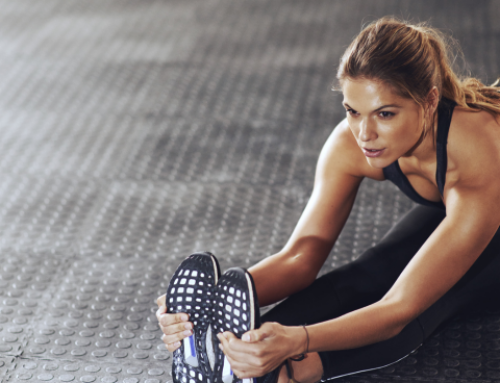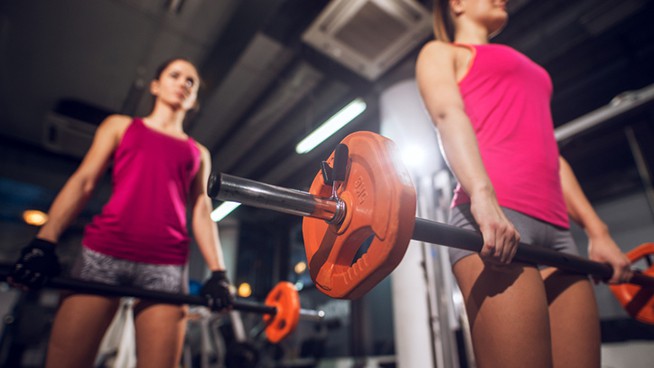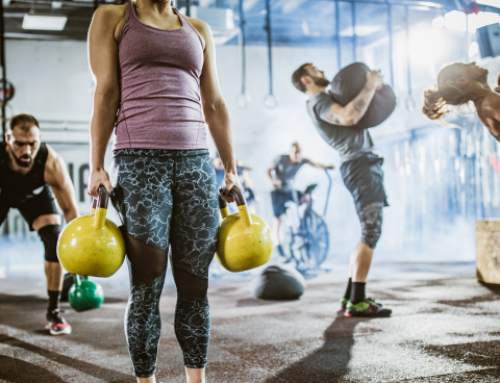Functional Fitness: What It Is and Why It’s Important
So much of our workout practice is focused on the big goals, like running faster, lifting more or bulking up. But there’s more to fitness than these common overarching goals. One of the most valuable things you can do with your gym time is work on what’s known as functional fitness, which is meant to improve our capacity for daily activities. Whether it’s squatting, reaching or just standing with better posture, functional fitness can form the groundwork for lifelong health. Functional fitness is all about navigating the physical challenges that everyday life throws at us. While that may sound easy enough now, an old adage rings true when it comes to functional fitness: You don’t know what you have until it’s gone. A loss of functional fitness can make life more arduous and less enjoyable, so it’s something that should always be at the forefront of every human’s thinking.
Coordinating Functions
One of the most important reasons to perform functional fitness activities is that activities like machine weight training isolate muscles rather than coordinate them. Isolation is great for some purposes—it makes for well-developed individual muscle groups—but it won’t help you perform practical tasks like lifting a heavy suitcase or reaching a high cabinet. Functional exercises, though, are all about these daily practices.
Squat Stronger
Do you squat? If you’re like most serious gym-goers, the answer is a resounding “yes,” but you probably do it with a lot of weight. That’s fine, but it’s not necessary for those who want to improve their posture. For that, try a basic Dumbbell Goblet Squat, which works the full body while also building bone density and balance. And since they only require a dumbbell, they’re easy to practice at home on days you’re too busy to hit the gym.
Though you’ll likely feel Squats primarily in your legs while you’re performing them, it’s important to fully engage your core and keep your body upright as you move through the exercise. This will teach you to engage your core at other times, such as when you’re sitting and standing, improving your posture and relieving neck and back pain.
Extend Your Reach
Whether you’re in the grocery store trying to reach something at the back of the shelf or turning around to grab your bag from the backseat of your car, reaching and stretching can be challenging, no matter how strong you are. The problem? This requires flexibility and balance more than strength. Functional fitness activities will provide those skills.
One way to extend your reach and improve your balance is by performing “Get-Ups.” This simple exercise begins with lying on your back. From there, you’ll essentially punch-jump upward, with one hand driving upward and the other pressing off the floor in an assist. You can then reverse the motion to lower yourself back down and then continue, alternating arms.
For an added challenge, try this (and other exercises) with your eyes closed. Practicing simple moves with your eyes closed helps improve spatial awareness and balance. Because you don’t have visual cues to guide you, previously simple exercises can quickly become challenging once again.
Do You Even Lift?
Those who don’t lift weights regularly tend to think of lifting as something that requires arm strength or maybe leg strength because of the adage, “lift from the legs, not from the back.”
The problem is that the back actually matters when lifting something heavy. Done properly, the activity engages the arms, legs, hip flexors and lower back. Without all the parts working together, you end up injuring yourself, typically by throwing out your back.
Kettlebell Deadlifts are a good way to practice lifting activities from a functional perspective and they allow for a gradual increase in weight bearing as well as an emphasized form. For those with a little more lifting experience, a more traditional Deadlift will strengthen pulling muscles and emphasize proper form for lifting objects off the floor.
If you’re looking for exercises that will help you navigate your daily activities pain-free, functional fitness is perfect for you. By combining foundational movements like pulling, rotating or reaching, these exercises are also necessary for anyone seeking greater fitness intensity.
You’ll need the core strength, balance, and muscle coordination these
activities provide if you’re going to dominate in the gym or on the field.
Photo Credit: Cecilie_Arcurs/iStock
READ MORE:
RECOMMENDED FOR YOU
MOST POPULAR
Functional Fitness: What It Is and Why It’s Important
So much of our workout practice is focused on the big goals, like running faster, lifting more or bulking up. But there’s more to fitness than these common overarching goals. One of the most valuable things you can do with your gym time is work on what’s known as functional fitness, which is meant to improve our capacity for daily activities. Whether it’s squatting, reaching or just standing with better posture, functional fitness can form the groundwork for lifelong health. Functional fitness is all about navigating the physical challenges that everyday life throws at us. While that may sound easy enough now, an old adage rings true when it comes to functional fitness: You don’t know what you have until it’s gone. A loss of functional fitness can make life more arduous and less enjoyable, so it’s something that should always be at the forefront of every human’s thinking.
Coordinating Functions
One of the most important reasons to perform functional fitness activities is that activities like machine weight training isolate muscles rather than coordinate them. Isolation is great for some purposes—it makes for well-developed individual muscle groups—but it won’t help you perform practical tasks like lifting a heavy suitcase or reaching a high cabinet. Functional exercises, though, are all about these daily practices.
Squat Stronger
Do you squat? If you’re like most serious gym-goers, the answer is a resounding “yes,” but you probably do it with a lot of weight. That’s fine, but it’s not necessary for those who want to improve their posture. For that, try a basic Dumbbell Goblet Squat, which works the full body while also building bone density and balance. And since they only require a dumbbell, they’re easy to practice at home on days you’re too busy to hit the gym.
Though you’ll likely feel Squats primarily in your legs while you’re performing them, it’s important to fully engage your core and keep your body upright as you move through the exercise. This will teach you to engage your core at other times, such as when you’re sitting and standing, improving your posture and relieving neck and back pain.
Extend Your Reach
Whether you’re in the grocery store trying to reach something at the back of the shelf or turning around to grab your bag from the backseat of your car, reaching and stretching can be challenging, no matter how strong you are. The problem? This requires flexibility and balance more than strength. Functional fitness activities will provide those skills.
One way to extend your reach and improve your balance is by performing “Get-Ups.” This simple exercise begins with lying on your back. From there, you’ll essentially punch-jump upward, with one hand driving upward and the other pressing off the floor in an assist. You can then reverse the motion to lower yourself back down and then continue, alternating arms.
For an added challenge, try this (and other exercises) with your eyes closed. Practicing simple moves with your eyes closed helps improve spatial awareness and balance. Because you don’t have visual cues to guide you, previously simple exercises can quickly become challenging once again.
Do You Even Lift?
Those who don’t lift weights regularly tend to think of lifting as something that requires arm strength or maybe leg strength because of the adage, “lift from the legs, not from the back.”
The problem is that the back actually matters when lifting something heavy. Done properly, the activity engages the arms, legs, hip flexors and lower back. Without all the parts working together, you end up injuring yourself, typically by throwing out your back.
Kettlebell Deadlifts are a good way to practice lifting activities from a functional perspective and they allow for a gradual increase in weight bearing as well as an emphasized form. For those with a little more lifting experience, a more traditional Deadlift will strengthen pulling muscles and emphasize proper form for lifting objects off the floor.
If you’re looking for exercises that will help you navigate your daily activities pain-free, functional fitness is perfect for you. By combining foundational movements like pulling, rotating or reaching, these exercises are also necessary for anyone seeking greater fitness intensity.
You’ll need the core strength, balance, and muscle coordination these
activities provide if you’re going to dominate in the gym or on the field.
Photo Credit: Cecilie_Arcurs/iStock
READ MORE:











